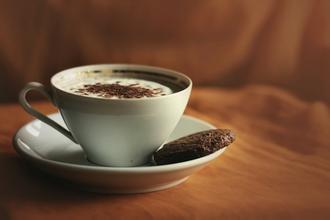Flavor and taste characteristics of Nicaraguan coffee beans introduction to manor producing areas of variety treatment method
Masaya
A city in southwestern Nicaragua and capital of Massaya province. Located at the eastern foot of Masaya Volcano, 25 kilometers northwest from Managua. The population is 43000 (1980). The industrial and commercial center of the surrounding agricultural area (which mainly produces tobacco). Famous for producing Indian handicrafts (embroidery, palm hats, etc.). There are tobacco, shoes, soap, leather and other industries. Railway, road and air transportation are convenient.
Xenotepe
A city in southwestern Nicaragua and the capital of Karaso province. Located in the Diliamba Highlands, 760 meters above sea level. The population is 18000 (1980). Founded in 1883. Distribution and processing center of agricultural and animal husbandry products. There are limestone, salt mines and other mining industries nearby. Railways and highways lead to Managua.
Bloomfields.
Port city in southeastern Nicaragua, capital of Zelaya province. It is located at the mouth of the Escondido River in Bloomfield Bay. The population is 21000 (1980). It was a gathering place for pirates in the 16th and 17th centuries and later the capital of the British Moskitos coastal protectorate. It has been in Nicaragua since 1850. Due to the accumulation of sediment in the bay, import and export trade has to pass through the outer port of Bloom. Industry to wood processing, frozen sea shrimp, gold and silver jewelry processing. The house is made of wood and has a unique style. The steamboat can trace up the Escondido River for 100 kilometers to Lamar.
Nicaragua is an economically backward agricultural country, is one of the poorest countries in Central America, the unemployment rate is very high, people live in poverty, and coffee is Nicaragua's pillar industry, producing nearly 100,000 tons of coffee beans every year. Due to the poor economic foundation, the coffee industry is still relatively backward, and coffee farmers are also in a relatively poor state.
Although Nicaragua is a country with a large territory in Central America, it is not a big producer in the coffee world, and its output and reputation are much weaker than that of its neighbor Costa Rica. But the high-quality Nicaraguan coffee is in the forefront of coffee beans in the world and enjoys a good reputation.
Traditional Nicaraguan coffee farmers are used to using water washing method for subsequent processing of coffee fruits. Coffee farmers are more accustomed to using water washing to ensure that the flavor of raw coffee beans is more stable and clean. it was not until about 2009 that the traditional attitudes of coffee farmers changed and began to try processing methods such as full sun and honey in more areas.
Matagalpa, which we mentioned earlier, is the coffee producing area that produces the best quality coffee in Nicaragua, and there is a heavyweight coffee estate worth introducing-the lemon tree (El Limoncillo). The manor is located in the plateau of Matagalpa between 950m and 1300m above sea level, and there are towering coniferous forests around the coffee trees, providing shade for the growth of coffee trees. This allows coffee trees to be exposed to sunlight while protecting them from being burned by the scorching sun.
In order to ensure the quality of coffee, the manual picking method is used to pick the fully ripe fruits one by one, which usually takes three times to complete. Although the manual picking method has high labor cost and low picking efficiency, it can greatly protect the plant from being hurt in the picking process, and the mature fruit will have better sweetness at the same time. The efforts of the producers have not been in vain, and the coffee from Lemon Manor won the second place in the Nicaragua Excellence Cup COE National Competition in 2008. This bean has a beautiful appearance, delicate and rich flavor after washing, with aromas of fruit, vanilla and cream, and has gained more attention since then.
Lemon Tree Manor also processes coffee in a honey-treated way. After the coffee fruit is actually picked, the coffee with its exocarp removed is put on the African shed to dry. Compared with the traditional way of placing coffee directly on the ground to dry coffee, using African shed to dry coffee can reduce more pollution in the drying process, avoid producing more miscellaneous smell, and finally improve the quality of coffee. Honey-treated coffee beans have more attractive tropical fruit flavors.

Important Notice :
前街咖啡 FrontStreet Coffee has moved to new addredd:
FrontStreet Coffee Address: 315,Donghua East Road,GuangZhou
Tel:020 38364473
- Prev

Aromatic, pure Salvadoran coffee beans Flavor Description Processing characteristics Variety Taste introduction
El Salvador coffee characteristics: El Salvador coffee is a specialty of Central America, the coffee body light, aromatic, pure, slightly acidic. Flavor: Balanced taste, excellent texture Suggestion Roasting method: Medium to deep, versatile ★: General Salvadoran coffee market: The best Salvadoran coffee is exported from January to March, and 35% of the extra hard beans are exported to Germany. 19
- Next

Flavor description of Brazilian coffee beans introduction to the taste of varieties in producing areas
Brazil is vividly compared to the giant and monarch of the coffee world. There are about 3.97 billion coffee trees there, and small farmers now grow 75% of Brazil's total coffee production. The number of coffee producers in Brazil is twice or even three times that of Colombia, the second largest coffee producer in the world. Unlike in the past, Brazil's economy is less dependent on coffee.
Related
- Detailed explanation of Jadeite planting Land in Panamanian Jadeite Manor introduction to the grading system of Jadeite competitive bidding, Red bid, Green bid and Rose Summer
- Story of Coffee planting in Brenka region of Costa Rica Stonehenge Manor anaerobic heavy honey treatment of flavor mouth
- What's on the barrel of Blue Mountain Coffee beans?
- Can American coffee also pull flowers? How to use hot American style to pull out a good-looking pattern?
- Can you make a cold extract with coffee beans? What is the right proportion for cold-extracted coffee formula?
- Indonesian PWN Gold Mandrine Coffee Origin Features Flavor How to Chong? Mandolin coffee is American.
- A brief introduction to the flavor characteristics of Brazilian yellow bourbon coffee beans
- What is the effect of different water quality on the flavor of cold-extracted coffee? What kind of water is best for brewing coffee?
- Why do you think of Rose Summer whenever you mention Panamanian coffee?
- Introduction to the characteristics of authentic blue mountain coffee bean producing areas? What is the CIB Coffee Authority in Jamaica?

